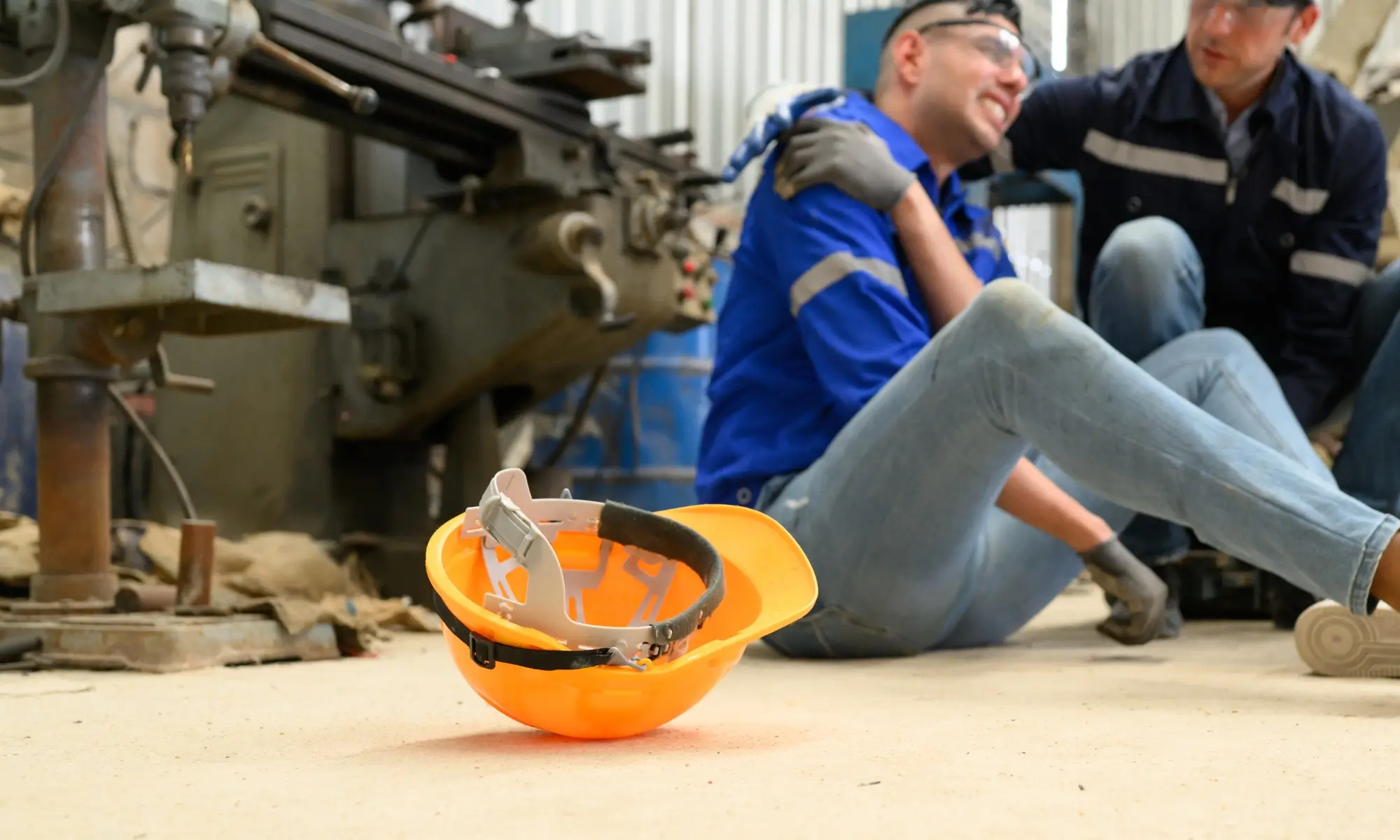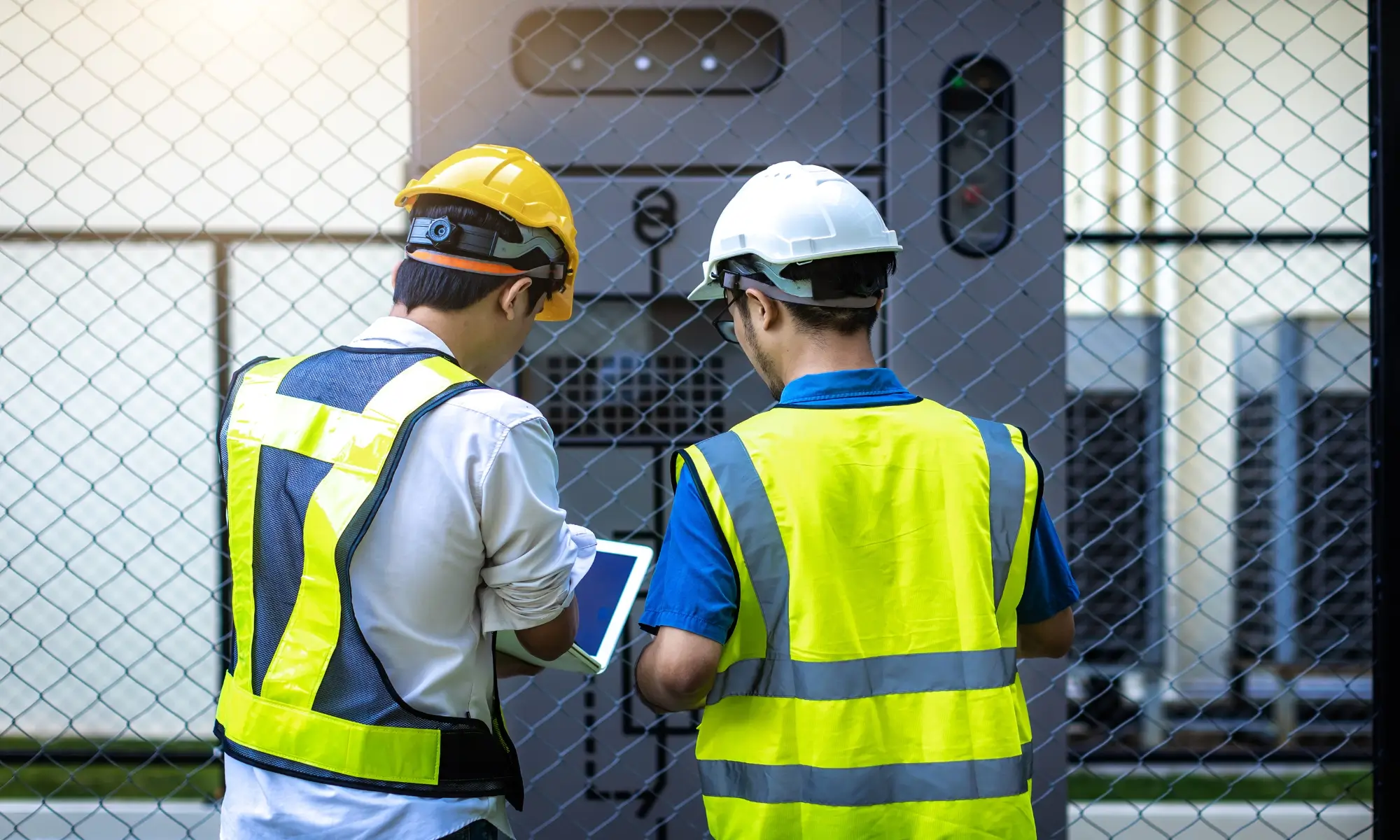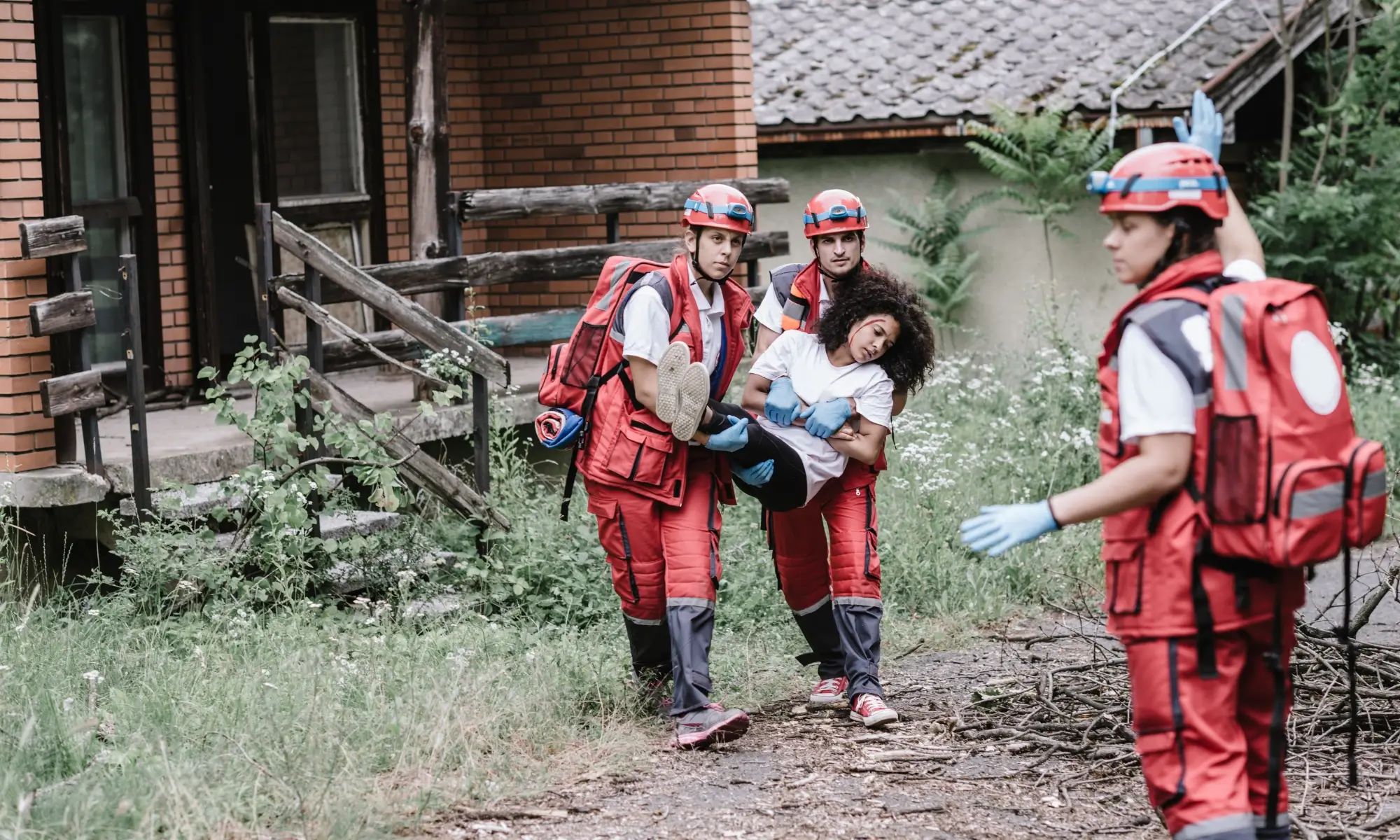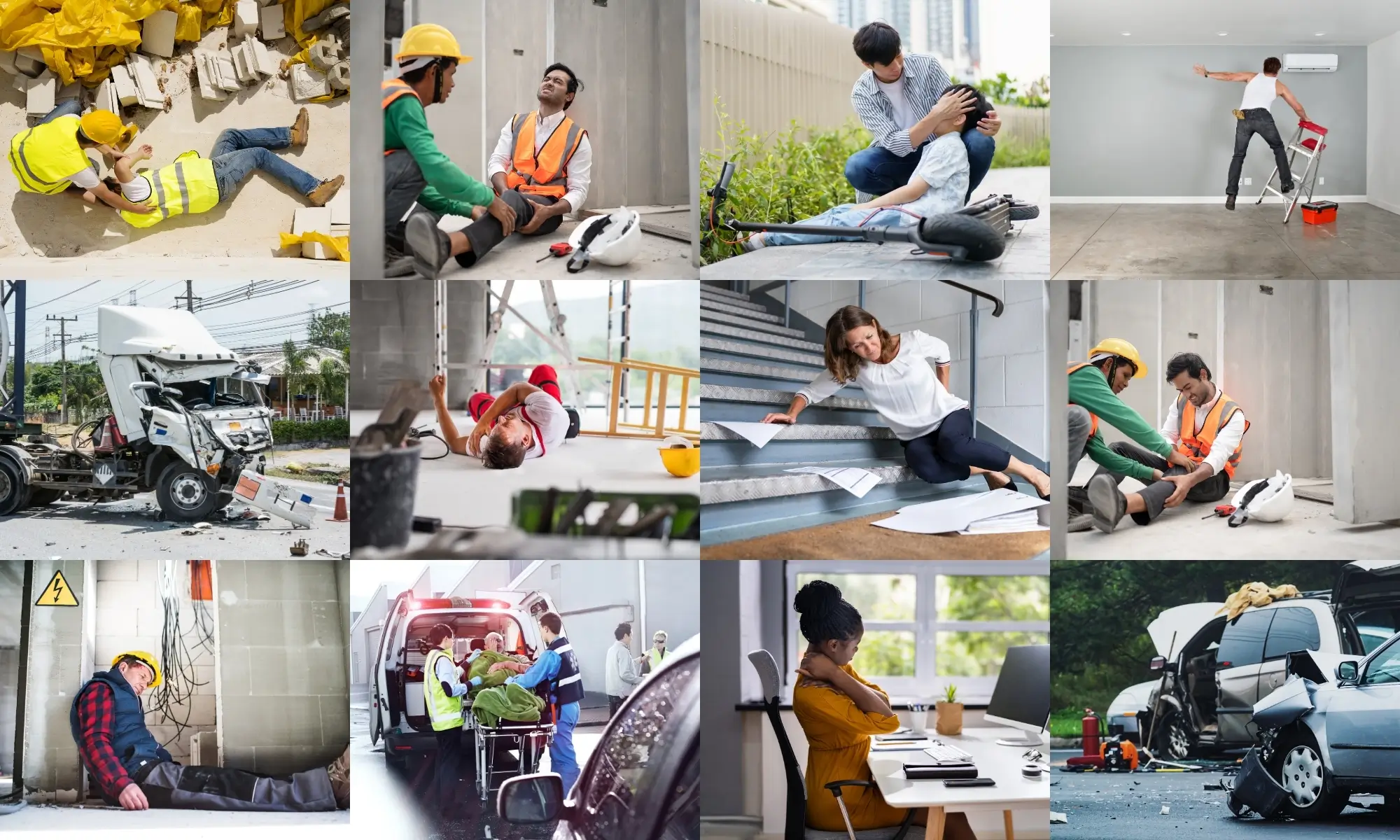A safe working environment is pivotal for the well-being of employees and the overall productivity and success of any organization. However, workplaces can sometimes be a hotbed for various accidents regardless of the industry. These accidents range from minor inconveniences to severe incidents impacting employees’ health and lives.
In this guide, we delve into 20 common types of workplace accidents. For each type, we’ll explore what it entails, the industries it’s most prevalent in, and the preventive measures that can be taken. Whether you are an employer, employee, or health and safety enthusiast, this guide will equip you with the knowledge to identify and mitigate risks, contributing to safer working environments. So, without further ado, let’s dive in.

20 Types Of Accidents That Are Most Common In Workplaces
Several types of accidents are commonly reported in the workplace. The specific types and frequency can vary depending on the industry and work environment. Here are some of the most common types of accidents in the workplace:
1. Slips, Trips, and Falls
Slips, trips, and falls are the most common types of workplace accidents. Slips occur when there is not enough friction between footwear and the floor surface, such as on wet or polished floors. Trips happen when a person’s foot strikes an object or uneven surface, leading to a loss of balance. Falls occur when a person descends suddenly due to a slip or trip, or from working at a height without proper protection.
Key Points:
- Causes: Wet floors, clutter, poor lighting, loose rugs, uneven surfaces.
- Common in offices, factories, and construction sites.
- Injuries: Cuts, bruises, fractures, sprains, head trauma.
- Prevention: Keep floors dry and clean, improve lighting, install handrails and anti-slip mats.
2. Falls from Height
Falls from height occur when a person falls from an elevated position, such as a ladder, scaffold, roof, or raised platform. This type of accident is common in construction and warehouse settings, where work at heights is frequent.
Key Points:
- Causes: Unstable working surfaces, lack of guardrails, improper use of ladders.
- Common in construction, roofing, and warehousing.
- Injuries: Broken bones, spinal injuries, head trauma, death.
- Prevention: Provide safety harnesses and guardrails, train workers on height safety, ensure stable surfaces.
3. Falling Objects
Falling objects occur when materials, tools, or other objects fall from shelves or elevated areas, striking workers below. This is common in warehouses, construction sites, and manufacturing plants.
Key Points:
- Causes: Improper stacking, overloading shelves, unsecured materials.
- Common in manufacturing, construction, and warehousing.
- Injuries: Head injuries, cuts, bruises, fractures.
- Prevention: Use safety nets, secure items properly, enforce wearing hard hats.
4. Cuts and Lacerations
Cuts and lacerations involve injuries caused by sharp objects or machinery. They are common in industries where cutting tools or machinery are used, such as kitchens and manufacturing plants.
Key Points:
- Causes: Improper tool use, lack of protective gear, poor maintenance of equipment.
- Common in kitchens, factories, and construction sites.
- Injuries: Minor cuts to deep lacerations requiring medical attention.
- Prevention: Provide cut-resistant gloves, maintain tools, train workers on proper handling.

5. Electrical Incidents
Electrical incidents involve injuries caused by contact with electrical sources, such as exposed wires, faulty outlets, or equipment malfunctions. They can cause shocks, burns, and even electrocution.
Key Points:
- Causes: Faulty wiring, overloaded circuits, exposed wires.
- Common in construction, manufacturing, and offices.
- Injuries: Burns, shocks, internal injuries, death.
- Prevention: Regularly inspect wiring, provide proper insulation, train workers in electrical safety.
6. Fires and Explosions
Fires and explosions result from flammable materials, faulty electrical systems, or chemical reactions. These accidents can cause severe damage to property and put workers’ lives at risk.
Key Points:
- Causes: Flammable materials, gas leaks, poor electrical systems.
- Common in manufacturing, construction, and chemical industries.
- Injuries: Burns, respiratory injuries, death.
- Prevention: Proper storage of flammable materials, fire extinguishers, and emergency training.
7. Overexertion
Overexertion occurs when a person engages in excessive physical effort, such as lifting, pushing, pulling, or throwing objects, leading to muscle strains and injuries.
Key Points:
- Causes: Improper lifting techniques, insufficient rest, heavy loads.
- Common in construction, warehousing, and manual labor.
- Injuries: Back pain, muscle strains, joint injuries.
- Prevention: Train on proper lifting techniques, provide lifting aids, encourage regular breaks.
8. Exposure to Harmful Substances
Exposure to harmful substances occurs when workers come into contact with dangerous chemicals, fumes, dust, or radiation. This can happen through inhalation, skin contact, or ingestion, leading to respiratory issues, skin irritation, poisoning, or long-term diseases like cancer.
Key Points:
- Causes: Improper handling of chemicals, poor ventilation, lack of protective equipment.
- Common in: Manufacturing, construction, healthcare, and laboratories.
- Injuries: Respiratory problems, skin burns, poisoning, long-term health issues.
- Prevention: Provide proper ventilation, train employees on chemical safety, and use protective equipment (gloves, masks, clothing).

9. Caught-in/between Objects
Caught-in/between objects accidents occur when a worker’s body part is caught, crushed, or compressed between moving or stationary objects, such as machinery or heavy equipment. These accidents can lead to serious injuries or fatalities.
Key Points:
- Causes: Lack of machine guards, improper training, inadequate maintenance.
- Common in: Construction, manufacturing, and industrial settings.
- Injuries: Fractures, amputations, internal injuries, death.
- Prevention: Install machine guards, provide proper training, and enforce lockout/tagout procedures.
10. Repetitive Strain Injuries (RSI)
Repetitive Strain Injuries (RSI) result from repeated movements or poor posture over time, leading to damage to muscles, tendons, and nerves. They are common in office work and assembly line jobs.
Key Points:
- Causes: Repeated typing, awkward postures, poor ergonomics.
- Common in: Office work, manufacturing, and data entry jobs.
- Injuries: Carpal tunnel syndrome, tendonitis, back and neck pain.
- Prevention: Adjust workstations for better ergonomics, encourage breaks, and provide ergonomic equipment.
11. Vehicle Accidents
Vehicle accidents involve collisions or mishaps with work vehicles like forklifts, trucks, or heavy machinery. They are common in warehouses, factories, and construction sites.
Key Points:
- Causes: Operator error, poor maintenance, lack of training.
- Common in: Warehousing, construction, and logistics.
- Injuries: Broken bones, head injuries, death.
- Prevention: Provide driver training, maintain vehicles, enforce traffic controls.
12. Ergonomic Injuries
Ergonomic injuries result from poorly designed workspaces that force workers into unnatural postures or repetitive movements, leading to musculoskeletal disorders.
Key Points:
- Causes: Poor seating, improper desk height, lack of breaks.
- Common in: Office work, manufacturing, and assembly lines.
- Injuries: Back pain, carpal tunnel syndrome, joint issues.
- Prevention: Adjust workstations, provide ergonomic chairs, encourage movement and stretching.

13. Struck Against Objects
Struck against objects accidents happen when a worker accidentally collides with a stationary object such as a wall, door, or machine.
Key Points:
- Causes: Clutter, poor lighting, distractions.
- Common in: Offices, warehouses, and factories.
- Injuries: Bruises, cuts, concussions.
- Prevention: Keep walkways clear, improve lighting, and increase hazard awareness.
14. Machine Entanglement
Machine entanglement occurs when clothing, hair, or body parts get caught in machinery with rotating or moving parts, leading to severe injuries.
Key Points:
- Causes: Lack of safety guards, loose clothing, poor maintenance.
- Common in: Manufacturing, construction, and heavy industry.
- Injuries: Amputations, lacerations, death.
- Prevention: Install machine guards, enforce safety gear use, and provide proper training.
15. Violence at the Workplace
Violence at the workplace includes physical assaults, threats, or aggressive behavior between employees or from outsiders, such as customers or intruders. It can stem from stress, personal conflicts, or criminal activity, affecting both physical and mental health.
Key Points:
- Causes: Workplace stress, personal conflicts, poor management, lack of security.
- Common in: Retail, healthcare, customer service, and public-facing roles.
- Injuries: Bruises, fractures, emotional trauma, and death.
- Prevention: Install security systems, provide conflict resolution training, encourage open communication, and implement zero-tolerance policies.
16. Walk-into Accidents
Walk-into accidents happen when a person collides with objects such as walls, doors, or furniture while walking. This is usually caused by distraction or poor visibility.
Key Points:
- Causes: Poor lighting, clutter, distractions (e.g., using phones).
- Common in: Offices, retail environments, and warehouses.
- Injuries: Bruises, cuts, and minor head injuries.
- Prevention: Keep walkways clear, improve lighting, arrange furniture properly, and reduce distractions.

17. Temperature Extremes
Temperature extremes involve exposure to excessively hot or cold environments, leading to heat stress, heat stroke, frostbite, or hypothermia.
Key Points:
- Causes: Poor ventilation, outdoor work, lack of proper clothing.
- Common in: Construction, manufacturing, agriculture, and outdoor work.
- Injuries: Heat exhaustion, dehydration, frostbite, and hypothermia.
- Prevention: Provide rest breaks, water or warm drinks, appropriate clothing, and ventilation.
18. Noise-Induced Hearing Loss (NIHL)
Noise-Induced Hearing Loss occurs when workers are exposed to high noise levels over a prolonged period, damaging the inner ear.
Key Points:
- Causes: Loud machinery, poor noise insulation, and lack of hearing protection.
- Common in: Manufacturing, construction, aviation, and music industries.
- Injuries: Partial or complete hearing loss, tinnitus.
- Prevention: Use earplugs or earmuffs, monitor noise levels, and provide soundproofing where possible.
19. Collapses or Structural Failures
Collapses or structural failures occur when a building or structure suddenly falls, trapping or injuring workers. This is often caused by poor construction practices or natural disasters.
Key Points:
- Causes: Poor materials, overloading, natural disasters, design flaws.
- Common in: Construction, mining, and heavy industry.
- Injuries: Crushing injuries, broken bones, and death.
- Prevention: Follow building codes, use quality materials, conduct regular inspections, and provide emergency evacuation plans.
20. Confined Space Accidents
Confined space accidents occur when workers enter enclosed spaces with limited oxygen, toxic fumes, or poor ventilation, leading to asphyxiation, poisoning, or entrapment.
Key Points:
- Causes: Poor ventilation, unmonitored air quality, and lack of escape routes.
- Common in: Tanks, pipelines, tunnels, and storage silos.
- Injuries: Suffocation, chemical poisoning, and death.
- Prevention: Monitor air quality, provide proper ventilation, train workers, and establish rescue protocols.
Conclusion
In conclusion, understanding the 20 most common types of accidents that occur in workplaces is crucial for promoting safety and preventing incidents that can lead to injuries, disabilities, or even fatalities. By being aware of these potential hazards, employers can implement effective preventive measures, provide necessary training and personal protective equipment, and create a safety culture within their organizations.
Likewise, employees can prioritize their well-being by adhering to safety protocols, reporting hazards, and actively participating in maintaining a safe work environment. Ultimately, by working together and prioritizing safety, we can significantly reduce the occurrence of workplace accidents and ensure the health and well-being of everyone in the workplace.

